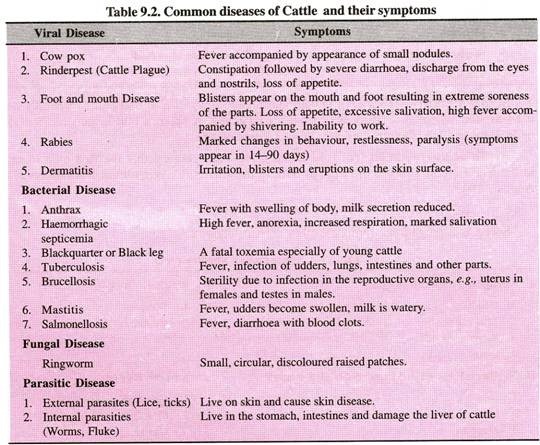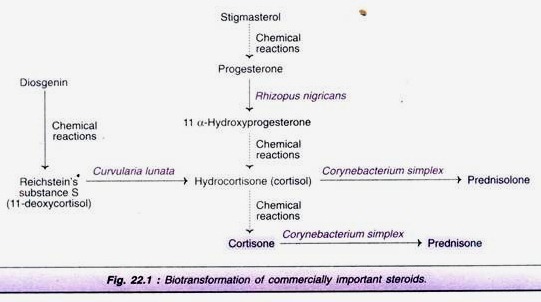ADVERTISEMENTS:
Root is the underground (positive geotropic), non-green part of the plant which develops from radical and grows vertically down into the soil.
Root lacks leaves, nodes, internodes and buds. Root and its branches constitute the root system. In nearly all dicots, the primary root is a direct elongation of the radicle. It remains distinct and bears lateral roots of several orders throughout the life of the plant.
The primary root along with its branches is termed as the Tap root system. When roots arise from any other place other than the root system, such as on stems, branches and leaves, they are called adventitious roots. (Fig. 4.1 i-ii).
Main or primary functions:
1. Anchorage – they help in fixing the plant firmly with the soil.
2. Absorption of water and minerals.
3. Prevention of soil erosion.
ADVERTISEMENTS:
Secondary functions:
1. Roots get modified to perform specific functions.
2. Mycorrhizae- Some roots bear fungal hyphae to form mycorrhizae. Such roots help in absorption of nitrogen and phosphorus from organic sources, e.g. Shisham, Chirpine
Parts of a root:
The following parts are present in a typical root (Fig. 4.2)
Root cap is thickened, protective cap like structures present at the tip of root apex. It protects the young growing apex of roots. The cells of root cap secrete mucilage which lubricates the passage of root through the soil.
Meristematic zone or zone of cell division:
Meristematic region represents the growing point. It is made up of actively dividing meristematic cells. This region adds new cells and is responsible for longitudinal growth of the root.
ADVERTISEMENTS:
Zone of cell elongation:
It lies just above the meristematic zone. These cells elongate rapidly. In cells of this zone, small vacuoles develop and later the vacuoles fuse to form one large central vacuole filled with cell sap.
Root hair zone:
Root hairs appear from outer cells of this zone in the form of tubular outgrowths. Most of the water absorption takes place through this zone. When the cells of root hair zone mature root hairs shrivel and become non-functional. New root hairs appear in the older parts of zone of elongation.
ADVERTISEMENTS:
Zone of cell maturation (differentiation):
The region lies just above the zone of maturation. The cells of this zone undergo maturation and forms different types of primary tissues of the root i.e., cortex, endodermis, xylem, phloem etc.
Modification of Roots:
Roots modify themselves to carry out some special functions. These functions differ from the general functions of roots i.e. storage, assimilation, additional support etc.
ADVERTISEMENTS:
Different types of modifications of root are described below:
Modifications of Tap Root (Fig. 4.3 i – iii):
(a) Fleshy tap roots:
These roots are modified for the storage of food. Food is stored in primary root; as a result it gets swollen.
ADVERTISEMENTS:
Fleshy tap roots are classified as:
(i) Conical:
The base of the root is broad and gradually tapers towards the apex. Secondary roots are present all over the swollen root e.g. Carrot.
(ii) Fusiform:
The root is swollen in the middle and gradually tapers towards both the ends imparting it a spindle shaped structure, e.g. Radish.
(iii) Napiform:
ADVERTISEMENTS:
This type of fleshy root is thickest at the base and takes the spherical shape. Towards lower side it thins out. Food is stored in upper swollen part e.g. Turnip.
(iv) Tuberous tap root:
These are tuberous roots with no definite shape. These store reserve food. e. g. Mirabilis (4 o’clock plant)
The secondary, tertiary or sometimes primary roots bear small nodule like swellings. The root nodules contain nitrogen fixing bacteria, these bacteria convert free atmospheric nitrogen into organic compounds of nitrogen and the process is called nitrogen fixation. These plants increase the fertility of soil by adding nitrates, e.g. Leguminous plants (pea).
ADVERTISEMENTS:
(c) Pneumatophores or respiratory roots:
Such roots are found in plant growing in mangroves or swamps near the sea-shore. Pneumatophores arise vertically upwards and come out of soil and water. They bear small pores called pneumatothodes or lenticels for exchange of gases, e.g. Heritiera.
Modifications of Adventitious Root (Fig. 4.4 i – xiv)
(i) Fibrous roots:
These roots are thin, thread-like and arising from the base of erect stem or nodes of horizontal stem. As they do not go deep into the soil, they behave as surface feeders. They appear in clusters and perform the functions of fixation and absorption e.g. Maize.
(ii) Fleshy adventitious roots:
Adventitious roots also store reserve food.
The different types of fleshy adventitious roots are:
a. Tuberous:
The roots become spindle shaped due to storage of food but are found singly e.g. sweet potato.
b. Fasciculated:
Roots swell up due to storage of food and are found in clusters e.g. Dahlia.
c. Moniliform or beaded roots:
The adventitious roots gets thickened at regular intervals giving the bead-like appearance of necklace, e.g. Portulaca.
d. Annulated roots:
The roots appear as they are formed by a number of swollen discs placed one above another. The root give an annular appearance showing a series of ring like outgrowths or swellings e.g. Cephalis.
e. Palmate roots:
The fleshy adventitious roots appears like a palm (or human hand) e.g. Aconitum.
f. Nodulose roots:
In these roots, swellings occur only near the tips. They are the nodulose roots, e.g. Mango ginger.
(iii) Prop roots:
These are large pillar-like roots, which appear from large horizontal branches in banyan trees. These adventitious roots grow downwards, which may finally enter into soil. They support or prop up the horizontal branches like pillars e g. Banyan.
(iv) Stilt roots:
Stilt roots appear from the basal nodes near the soil. They grow downwards and fix the erect stem with soil to provide extra support, e.g. Maize.
(v) Assimilatory roots:
These roots turn green due to development of chlorophyll and manufacture the food from CO2 and H2O in the presence of sunlight e.g. Trapa, Tinospora.
 (vi) Parasitic or haustorial roots:
(vi) Parasitic or haustorial roots:
Parasitic plant develops haustorial roots to get water and food supply from the host plant e.g. Cuscuta.
(vii) Floating roots:
Some of the roots of water plants store gases and become inflated. They help water plants in floating on the surface of water plant e.g. Jussiaea.
(viii) Foliar or epiphyllous roots:
These roots grow on the surface of the leaves and helps in vegetative propagation, e.g. Bryophyllum.
(ix) Epiphytic roots:
These roots develop from the stem and freely hang in air, they are provided with outer covering known as velamen by means of which moisture from atmosphere is absorbed. These roots also function as assimilatory organs due to presence of chloroplast contents below the velamen tissues, e.g. Vanda (orchid).
(x) Climbing roots:
These roots help the plant in climbing by penetrating the cracks and stick firmly to support e.g. Betel plant.
Anatomy of Root:
A thin transverse section of a young root reveals the internal structure when observed under the microscope
Internal Structure of Dicot Root (Fig 4.5- i):
1. Epiblema:
This is the outermost layer of the root. It consists of a single row of thin- walled parenchyma cells. The outer walls of most of the cells extend out into tubular, unicellular root hairs. The epidermis along with root hairs helps in the absorption of water and mineral salts from the soil.
2. Cortex:
It lies below the epidermis and forms major part of the root. It consists of several layers of oval or rounded parenchymatous cells. These cells contain starch grains and are loosely packed giving rise to intercellular spaces between them.
3. Endodermis:
This is the innennost layer of cortex. It consists of closely packed living cells characterized by the presence of band like thickenings called casparian strips. These strips are impervious to water.
4. Pericycle:
This is a single layer of thin-walled parenchyma cells lying immediately below the endodemis. It gives protection to the vascular tissues.
5. Conjunctive tissue:
It is a mass of parenchyma cells lying between the xylem and phloem bundles.
6. Pith:
It consists of parenchymatous cells and occupies a small area in the centre.
7. Vascular bundles:
There is equal number of separate xylem and phloem bundles arranged in a ring on alternate radii. They are usually 2-6 in number. The xylem bundle consists of protoxylem and metaxylem. The protoxylem lies towards the periphery and the metaxylem towards the center of the root. This arrangement of xylem is called exarch. The phloem bundle consists of sieve tubes, companion cells and phloem parenchyma. In the young root cambium is absent but it develops afterwards and is responsible for secondary growth in the dicot roots.
Internal Structure of Monocot Root (Fig. 4.5 – ii):
1. Epiblema:
This is the outermost later with unicellular root hairs as in dicot root.
2. Cortex:
It consists of several layers of parenchymatous cells with intercellular spaces.
3. Endodermis:
The innermost layer of cortex which separares underlying vascular tissue from the cortex. Casparian strips are present on the radial and transverse wall of the cells.
4. Pericycle:
It is single cell layered lying internal to the endodermis. It consists of small, thin-walled parenchyma cells with abundant protoplasm.
5. Conjunctive tissue:
It is a mass of parenchyma cells lying in between the xylem and phloem bundle.
6. Pith:
It occupies the central portion of the root and consists of parenchyma cells. Unlike the dicot roots, it is well-developed in monocot roots.
7. Vascular bundles:
Vascular bundles are radially arranged and more numerous than in the dicot root. Xylem and phloem form an equal number of separate bundles. Each xylem bundle consists of protoxylem lying towards the pericycle and metaxylem towards the centre of the root. This arrangement of xylem is called exarch. The phloem bundle consists of sieve tubes, companion cells and phloem parenchyma. Cambium is absent and there is no secondary growth.








